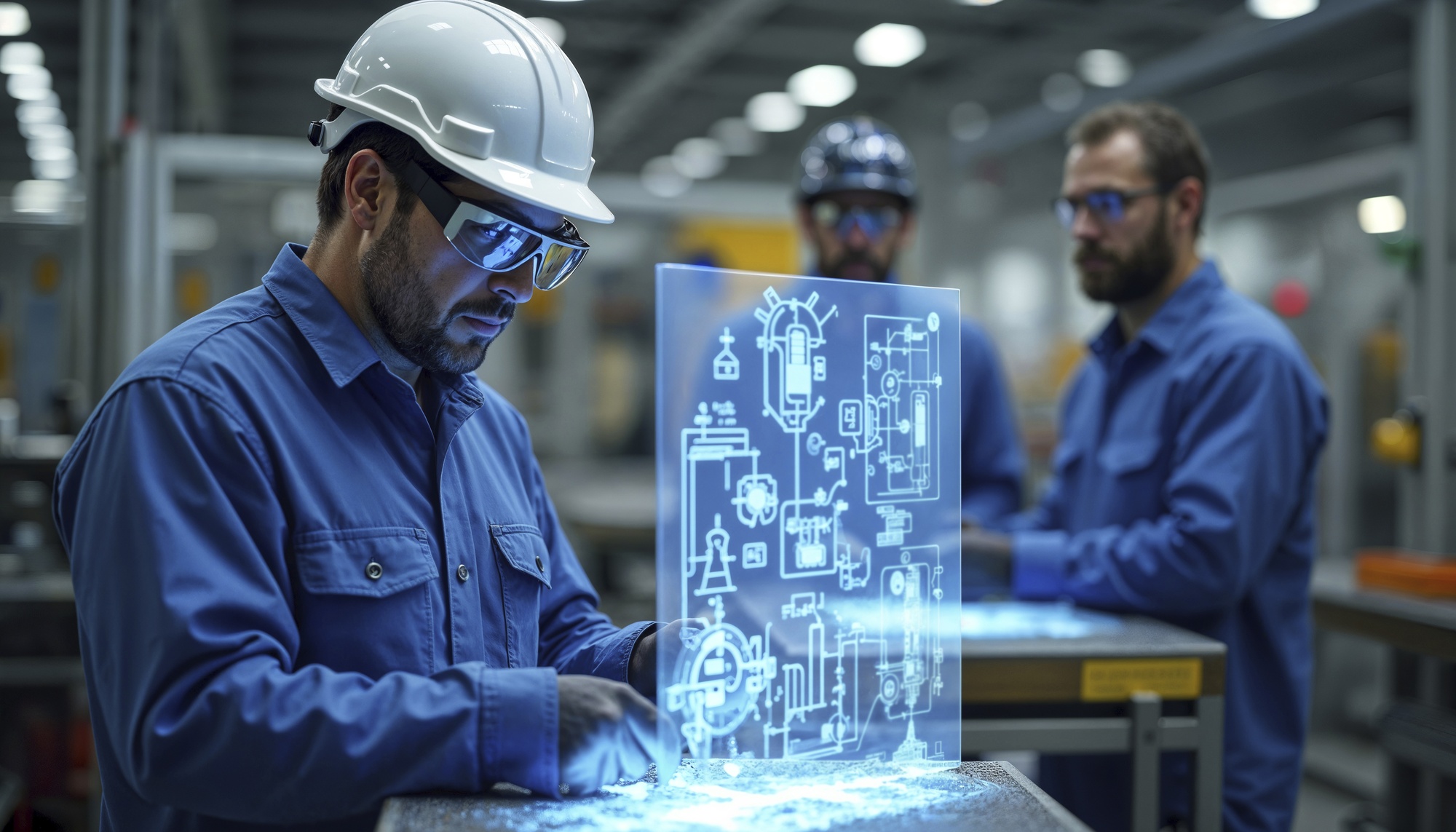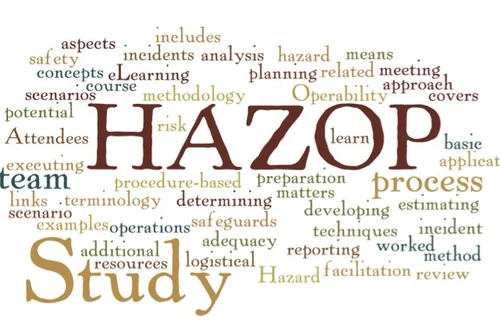Leveraging Industry 4.0 in Cement Manufacturing: A Path to Operational Excellence
Leveraging Industry 4.0 in Cement Manufacturing: A Path to Operational Excellence

The cement sector stands at a crossroads. For decades, cement production has proceeded in the conventional, manual manner. But those times have passed. Industry 4.0 aka fourth industrial revolution is revolutionizing cement plants to turn them into intelligent factories that are more efficient, sustainable, and affordable.
Picture a cement plant where equipment anticipates its own breakdowns, where energy use is optimized automatically, and where decisions are based on real-time data. That’s not science fiction—it’s the here-and-now of Industry 4.0 for cement production.
In this article, we are going to explore the realm of smart cement plants. By the end of this article, you will surely know everything about Industry 4.0. You will know it’s a game-changer that cement producers can’t afford to miss!
What is Industry 4.0 and Why Does It Matter in Cement Manufacturing?
Industry 4.0 means integration of smart digital technologies into manufacturing. These technologies turns the processes into automated, data-driven, and highly efficient ones.
For cement manufacturers, Industry 4.0 means:
- Real-time Monitoring: Sensors track every stage of production, detecting issues before they cause costly downtime.
- Predictive Maintenance: AI can finds problems in machines before they break. This helps to avoid sudden breakdowns.
- Smart Resource Management: Automated systems reduce waste, optimize fuel use, and improve energy efficiency.
- Better Product Quality: AI checks quality to make sure every batch of cement is top-notch.
This technology-driven method improves efficiency. It lowers costs, reduces emissions, and helps cement plants stay competitive in an evolving industry.
How Industry 4.0 is Reinventing Cement Manufacturing
1. Smart Sensors & IoT: Your Plant’s Digital Eyes and Ears
IoT works like a nervous system for your plant. Sensors inside machines track temperature, pressure, and energy use in real-time.
- If a machine overheats, you get an instant alert before it breaks down.
- If energy consumption spikes, the system adjusts automatically to cut costs.
- If raw materials fluctuate, AI adjusts the mix to keep cement quality steady.
This real-time control helps avoid shutdowns and keeps your plant running smoothly.
2. AI & Machine Learning: The Mind Behind Smarter Decision-Making
AI and Machine Learning (ML) scan millions of production data to forecast issues before they occur.
- If a kiln’s efficiency drops, AI identifies the exact issue and suggests a fix.
- If there’s a fluctuation in raw material quality, ML adjusts the mix in real time.
- If production is about to slow down, AI optimizes workflows to prevent delays.
In simple terms? No more guesswork. No more inefficiencies. Just smooth, data-driven operations.
3. Robotics & Automation: The Future of Work
Imagine a factory that works all day and night without mistakes. That is what automation can do.
- Robots perform repetitive functions such as bagging, stacking, and quality checking.
- Automated guided vehicles (AGVs) move raw materials effectively.
- Self-operating machinery reduces manual intervention, increasing safety.
The result? Faster production, fewer errors, and a safer work environment.
4. Digital Twin Technology: Test Before You Invest
A digital twin is a virtual replica of your entire cement plant. Before making changes in real life, you can:
- Simulate different production strategies to see which one works best.
- Predict equipment failures before they happen.
- Optimize fuel and material usage without experimenting on real assets.
This means lower risks, smarter investments, and better decision-making.
5. Cloud Computing: Access Data Anytime, Anywhere
Industry 4.0 makes data easy to access. Your plant’s data is not limited to a control room. You can check it from anywhere.
- Cloud-based dashboards show live production updates.
- Instant alerts help plant managers react quickly to issues.
- Historical data analysis identifies trends to improve efficiency.
Whether you are in the plant or halfway around the world, your cement plant is always within reach.
6. Blockchain for Supply Chain Transparency
Blockchain technology ensures traceability of raw materials and improves:
- Fraud prevention in supply contracts
- Sustainability tracking, proving compliance with regulations
- Faster supplier payments, reducing financial delays
Why Cement Plant Manufacturers Must Go Digital
Still unsure about digital transformation? Here’s why you need to act now:
1. Cut Costs with Smart Maintenance
Industry 4.0 helps you prevent breakdowns before they happen. Instead of fixing machines after they fail, AI spots problems early. This saves money and avoids unexpected downtime.
2. Improve Product Quality
AI-powered quality control ensures every batch of cement meets the highest standards. This means stronger, more durable cement and happier customers.
3. Fulfill Sustainability Goals
Cement production releases a lot of CO₂. But Industry 4.0 can help:
- AI controls kiln temperatures to use less fuel.
- Smart sensors find waste and reduce material loss.
- Automation supports carbon capture to cut emissions.
This makes cement manufacturing cleaner and greener.
4. Stay Ahead of the Competition
Top companies are using smart factories. If you don’t, you might fall behind. Cement manufacturing is going digital. Adapting early will keep you strong in the market.
Challenges of Industry 4.0 in Cement Manufacturing
Adopting Industry 4.0 is ofcourse not without its problems. Some of the main obstacles cement manufacturers could encounter are as follows:
1. High Initial Investment
Setting up IoT systems, AI analytics, and automation costs a lot at first. But in the long run, businesses can save more money.
2. Skill Gaps in the Workforce
Employees need training to operate and manage these advanced systems. Investing in upskilling programs is essential.
3. Cybersecurity Concerns
Going digital brings more cyber risks. Strong security is a must for data protection.
4. Integration with Existing Systems
Many cement plants still use legacy systems that might not be easily compatible with new technologies. Upgrading step by step is often the best approach.
Industry 4.0 is not about replacing workers. It’s about empowering them with better tools to drive efficiency.
How Can a Cement Manufacturer Start with Industry 4.0?
If you really want to upgrade your cement plant with Industry 4.0 then follow these simple steps:
1. Assess Your Current Systems
Identify pain points and areas where digital transformation can add value.
2. Define Your Goals
Decide what you want to achieve (e.g., lower costs, improved efficiency, better quality).
3. Start Small
Begin with pilot projects like predictive maintenance or process optimization before scaling up.
4. Invest in the Right Technology
Choose IoT devices, AI software, and automation solutions that align with your needs.
5. Train Your Workforce
Ensure employees understand how to use and maintain new systems.
6. Monitor and Improve
Continuously analyze data and refine processes for ongoing improvements.
Future Innovations in Cement Manufacturing
Industry 4.0 is not just digital tools. It is revolutionizing how cement is made. Here are some big innovations:
1. 3D Concrete Printing – The Future of Construction
3D printers can build structures step by step instead of using regular cement pouring. This reduces material waste and construction time.
2. Low-Carbon Cement – Built for a Greener Future
New types of cement help the environment. They cut CO₂ emissions but stay strong. Companies like Cemvision and Material Evolution are making them.
3. AI-Powered Circular Economy – Waste as a Resource
Smart waste management systems recycle industrial byproducts into cement raw materials, reducing environmental impact.
4. Robotics in Cement Plants – Safety and Efficiency
Collaborative robots (cobots) help workers in dangerous areas. They make work safer and faster. This reduces accidents and improves productivity.
5. 5G Connectivity
Faster and more reliable data transmission will improve the efficiency of smart cement plants.
Final Thoughts
Industry 4.0 is not just a trend. It is now the standard in cement production. Top cement manufacturers are using digital technology to improve efficiency, cut costs, and achieve sustainability.
Cement plant manufacturers who use Industry 4.0 today will lead in the future. The time for transformation is now.







